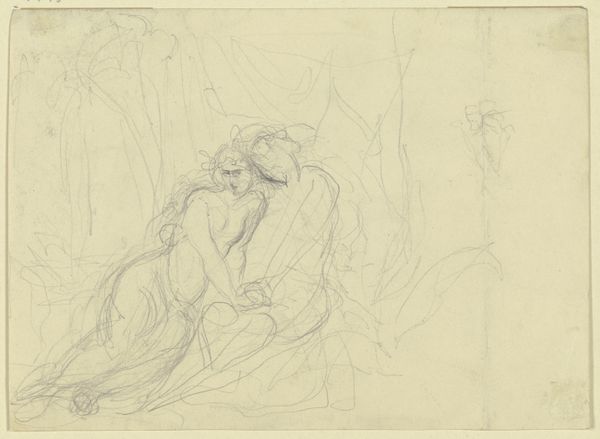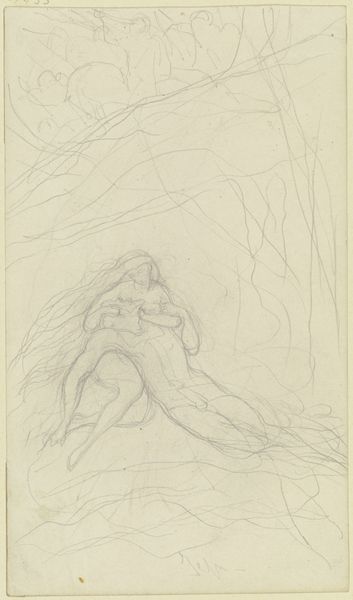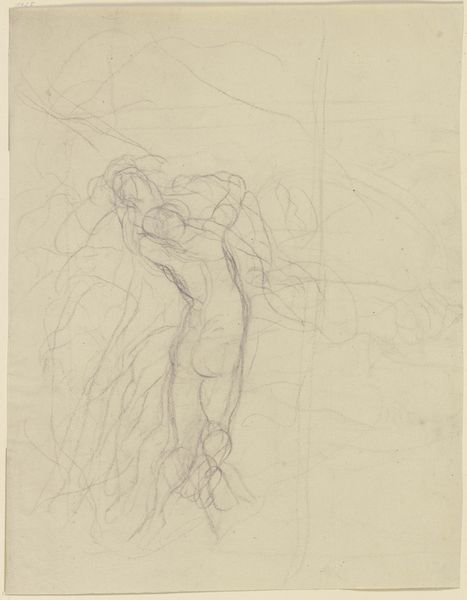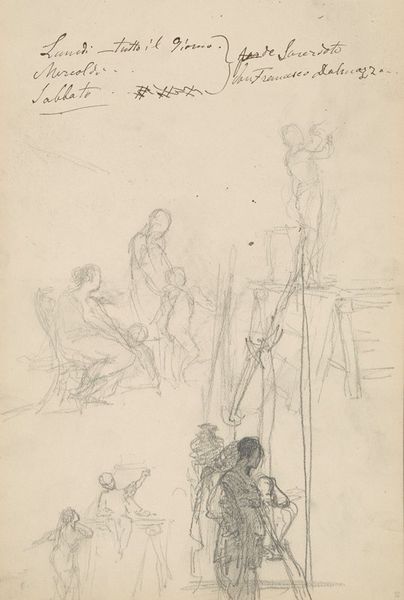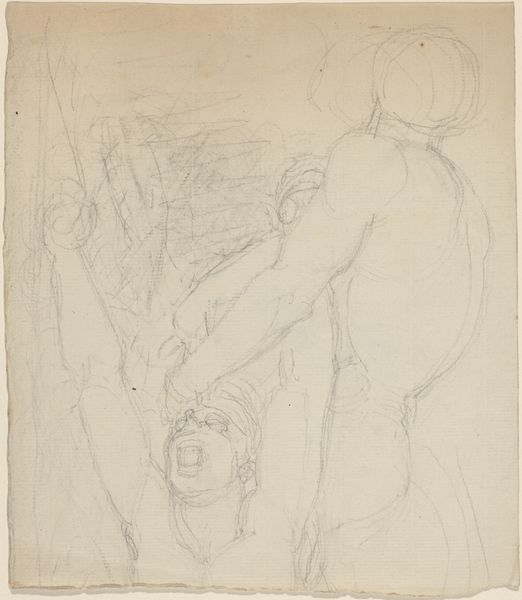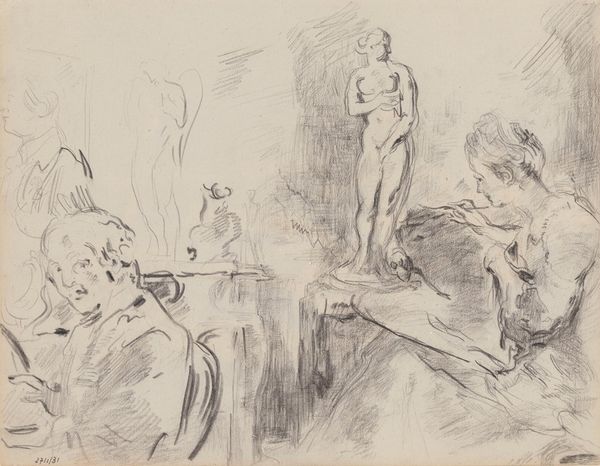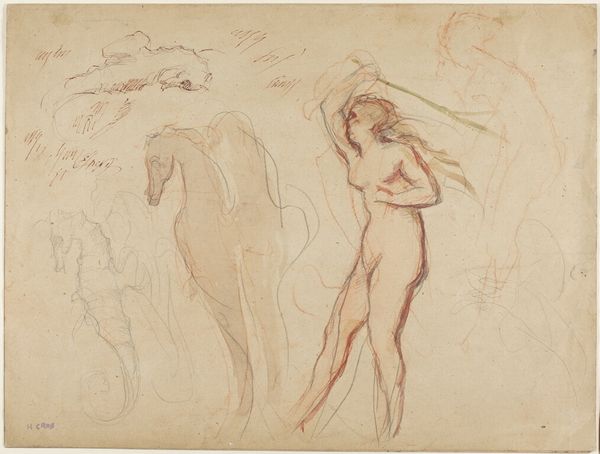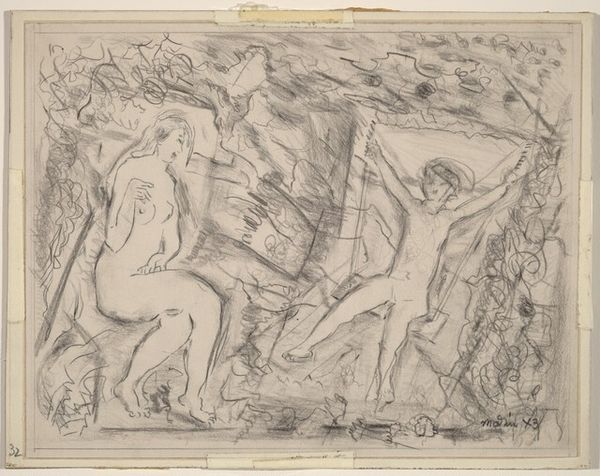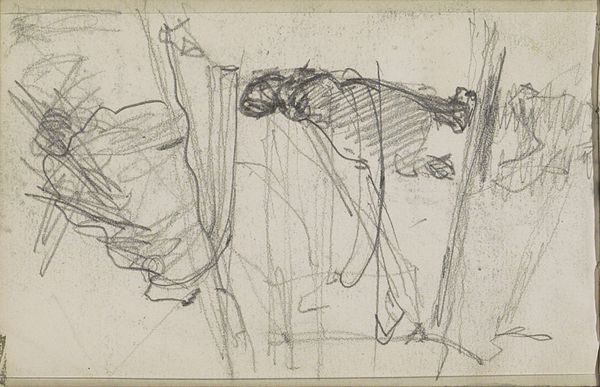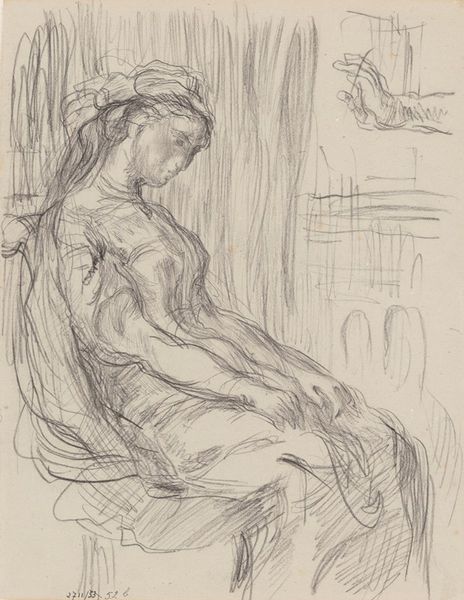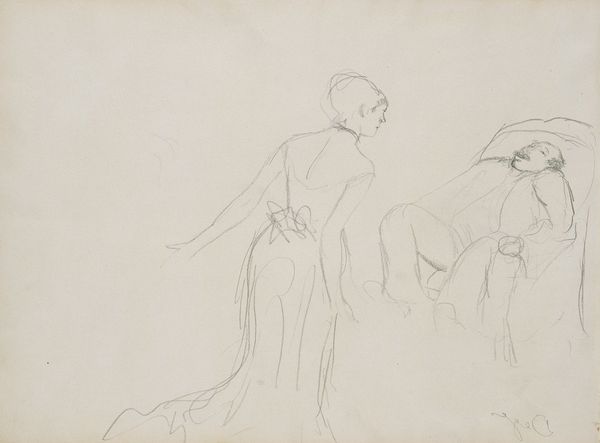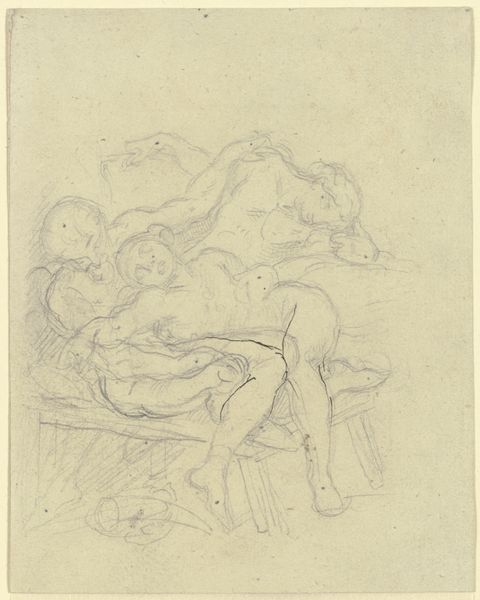
szkic postaci do plafonu ‘Jutrzenka’ w pałacu J. Neczajewa-Malcewa w Petersburgu oraz szkic do obrazu ‘Podpatrzona schadzka’ 1883
0:00
0:00
drawing, pencil
#
drawing
#
landscape
#
figuration
#
pencil
#
nude
Copyright: Public Domain: Artvee
Curator: This pencil drawing from 1883 is by Henryk Siemiradzki. It’s entitled ‘Sketch of a Figure for the ‘Dawn’ Ceiling in the J. Neczajew-Malcew Palace in St. Petersburg and Sketch for the Painting ‘Eavesdropped Rendezvous.’ What’s your initial take? Editor: There’s a clear distinction in how Siemiradzki approaches these sketches. The composition feels active, like a snapshot of his creative process. On the left is a swirling, dynamic figure versus the static groups. Curator: Interesting observation. I'm drawn to how these works circulated within the late 19th-century art market. Commissions like the Neczajew-Malcew Palace allowed artists like Siemiradzki to produce luxury goods. The patronage sustained him and provided workshops for the assistants. Editor: Yes, but it also solidified a certain hierarchy within the studio. The master's hand was the valued one, though many others toiled in service. Considering the materiality, pencil was an easily accessible medium. It was quick, cheap and allowed him to map out complex scenes. Do you know how these plafonds were usually produced? Curator: Plafonds were generally executed in oils directly onto the ceiling or on canvas that was then mounted. This preparatory sketch would be crucial for conveying the intended visual impact. Its public impact was shaped by both architectural and social context. The very nature of accessing it implied class. Editor: True. And consider the subject of the second sketch, this sense of illicit observation connects it with issues surrounding spectatorship. These smaller pieces have served specific purposes and now allow viewers entry points that subvert the class hierarchy of the initial consumption. Curator: I concur. Seeing both these pieces together encourages considering all components within the finished product. Siemiradzki allows consideration into the nature of both material production and creative genesis. Editor: Agreed, it leaves us reflecting on the hands, labor, and historical currents shaping art.
Comments
No comments
Be the first to comment and join the conversation on the ultimate creative platform.
